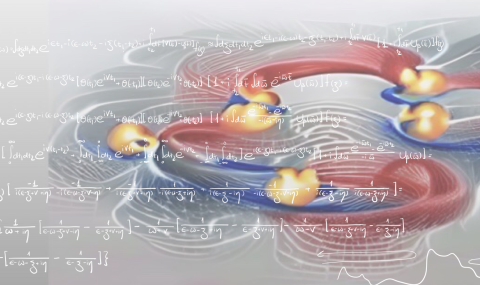Historically, measurements of electronic transport have often given the first indication of new physical concepts arising from interaction effects in condensed matter systems. Famous examples range from metal-insulator transitions and superconductivity to the Kondo and fractional quantum Hall effects. When measurements of the electric conductivity are supplemented by thermal transport experiments, even more profound insights into the many-body effects may be gained. For example, a well-known metric of the strength of interactions in a metal is given by the ratio of thermal and electric conductivities. When both electric and thermal currents are carried by non-interacting electrons, the Wiedemann-Franz law states that this ratio is given by a universal coefficient times temperature. Most conventional metals satisfy this law to a high accuracy despite the presence of electron-electron interactions; its violations indicate deviations from Landau’s Fermi-liquid theory. Important examples of such Wiedemann-Franz law violations occur in diffusive, interacting electron fluids at low temperatures as well as in high-Tc cuprates above the superconducting transition or in heavy-fermion systems.
Deviations from Wiedemann-Franz law behavior arise because thermal conductivity is affected more strongly by interactions than electric conductivity. Our group seeks to advance the understanding of how material properties like disorder, interactions, or nearly-critical fluctuations affect the electric and thermal transport coefficients. We apply these insights to search for new thermoelectric devices with improved efficiency.
Relevant Publications
-
D. Klein, K. Michaeli, Landauer formula for interacting systems: a consistent non-perturbative approximation, arXiv:2203.16572
- W.-R. Lee, K. Michaeli, and G. Schwiete, Lorenz ratio of an impure compensated metal in the degenerate Fermi liquid regime, Phys. Rev. B 103, 115140 (2021).
-
W.-R. Lee, A. M. Finkel'stein, K. Michaeli, and G. Schwiete, Role of electron-electron collisions for charge and heat transport at intermediate temperatures, Phys. Rev. Research 2, 013148 (2020).
-
K. Michaeli, and A. M. Finkel'stein, Quantum kinetic approach to the calculation of the Nernst effect, Phys. Rev. B 80, 214516 (2009).
-
K. Michaeli, and A. M. Finkel'stein, Quantum kinetic approach for studying thermal transport in the presence of electron-electron interactions and disorder", Phys. Rev. B 80, 115111 (2009).


